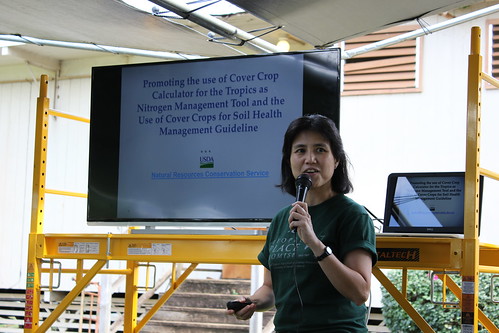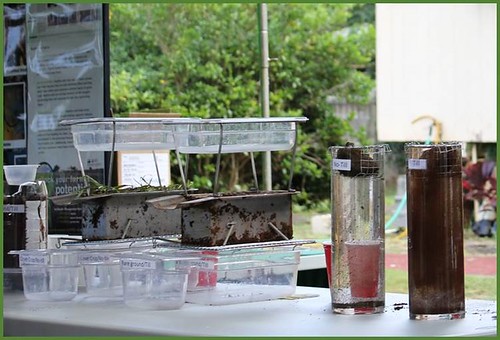
Farmers in the Tropics needed a better tool to estimate the nitrogen contribution from cover crops to reduce their commercial fertilizer rates.
Cover crops, which may appear as weeds to the untrained eye, are healthy plants that enhance soil health and minimize erosion. Covering the soil helps protect this precious resource that provides our food and fiber.
A calculator to address this issue was developed for Idaho and Oregon with a high success rate in legume cover crops― a type of plant, such as peas or beans, with seeds that grow in long cases (called pods). Through a Natural Resources Conservation Service (NRCS) Conservation Innovation Grant (CIG), the University of Hawaii expanded on this proven technology and modified it for tropical climates and soil types in the Pacific Islands Area.
To make the calculator more precise, nutrient availability in the soil was factored into the equation when the leguminous cover crops were mixed with graminaceous cover crops—plants from the grass family—or followed by conventional tilling or no-till cropping systems.
“Not all nitrogen accumulated in your cover crop could be available for the next crop to uptake,” said Dr. Koon-Hui Wang of UH’s College of Tropical Agriculture and Human Resources. “Nitrogen content in specific cover crop, microbial activities, physical and chemical properties of your soil, as well as the amount of cover crop biomass generated could all play a role in affecting the amount plant available nitrogen.”
Dr. Wang worked with Drs. Archana Pant and Ted Radovich; Extension agents Jari Sugano and Jensen Uyeda, and others on her Center for Rural Agricultural Training and Entrepreneurship (CRATE) team. They conducted soil health workshops that encouraged farmers to use a mixture of covers such as sunn hemp, oil radish, woolly pod vetch, pigeon pea, cowpea and similar crops.
A cover crop calculator encourages farmers across the islands to integrate and adopt cover cropping into their farming systems by making it easier to know what will work in their area. This calculator helps farmers implementing cover crop conservation practices to know what nutrients are already in the soil, reducing the amount of fertilizers they need to apply―saving time, money, and potential negative impacts from excessive fertilizer run off into waterways.
After each workshop, word traveled quickly that cover crops reduced erosion and increased organic matter, and suppressed weeds and nematode pests while attracting beneficial insects. This improves the health of our agriculture ecosystem. It’s now easier for farmers to manage cover crops more precisely and improve soil health by using science-based information that accurately computes the nitrogen contribution in a variety of cover crops.
The NRCS CIG program enables the agency to work with public and private entities like the University of Hawaii to accelerate technology transfer and adoption of promising innovations to address some of the Nation’s most pressing natural resource concerns. A complete list of other CIG projects is available online, and for a full description of Wang’s cover crop research, visit www.ctahr.hawaii.edu/WangKH/cover-crop.html.
Producers interested in NRCS technical and financial assistance are encouraged to contact their local USDA service center.

